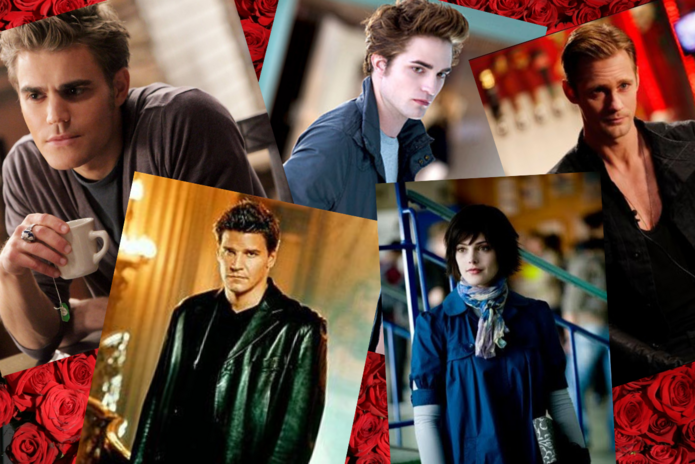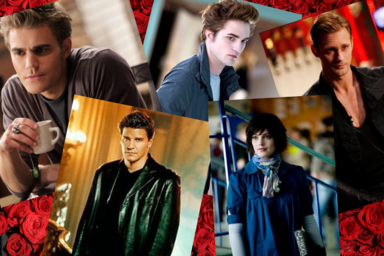Whether you’re directly involved in it or not, you’ve probably been deeply embedded in the so-called Twilight Renaissance over the last couple of years. The vampire mania of the very early 2000s is once again taking hold of the internet, with Twilight merch trending on TikTok, fashion inspiration from our favorite supernatural heroines on the rise, vampire cosplay blowing up and more. Even celebrities are showing off their love for these fictional bloodsuckers, something that was practically unheard of on the internet of years past.
I’ve seen this period in time referred to as the “vampires’ resurrection,” but who is it, exactly, that’s decided that vampires have risen from the dead? From where I’m standing, vampire popular culture never went away in the first place; the Twilight Renaissance is less like a resurgence and more like a sudden, open, worldwide embracement of the love we’ve always had for vampires in pop culture – it’s just that this surge in public hype makes it seem like a fresh round of vampire mania spreading across your FYP.
The first appearance of the modern vampire can be traced back to the 1976 novel Interview with the Vampire by Anne Rice. The book was a bestseller, spurring the creation of a slew of sequels and a 1994 film adaptation starring Brad Pitt, Tom Cruise, and many other A-List actors. Rice’s characters inspired the common trope of the tortured and reluctant vampire vs. the egotistical and cold vampire, the inspiration of which is clear in much of today’s popular vampire media; Buffy the Vampire Slayer (1997-2003), True Blood (2008-2014), and The Vampire Diaries (2009-2017), to name a few. Buffy the Vampire Slayer premiered during the popularization of the YA genre, and proved pivotal for its viewers and its successors alike. Now a cult classic, the show opened the door for our favorite vampire movies and shows with its half-human, half-vampire romance.
2008 added fuel to the fire with the release of the first film installment of Twilight. The movie – which told the story of 17-year-old Bella Swan and her love triangle with vampire Edward Cullen and werewolf Jacob Black – was anticipated to make only $29 million. With box office earnings of $400 million, it’s safe to say that Twilight (and its huge fanbase) was vastly underestimated. Its four follow-up films had fans camping outside of theaters to see them opening night, flocking to the premieres, collecting all of the merch they could get their hands on, and traveling to Forks, Washington (where the series is set) to take it all in. A celebration of the movies, known as the “Forever Twilight in Forks Festival,” has taken place in Forks every year since 2015 (with the exception of 2020, due to the pandemic). “Twilight Core” is a top trending aesthetic on Pinterest. Fans are also finding new meaning in the series with the “Twilight is Gay Now” page, which details how Bella could be a member of the LGBTQ+ community. Booboo Stewart, who played Seth Clearwater, knows the Cullen craze is immortal: “It’s kind of funny, if people like something, they kinda like it forever,” he told TooFab.
Right on the heels of Twilight came the CW’s The Vampire Diaries in 2009. Its premiere set a CW record for the most-watched TV premiere at the time. With a similar love triangle at its center (human teen Elena Gilbert, tortured and brooding vampire Stefan Salvatore, and his cocky brother Damon), the show was a hit, raking in seven Teen Choice Awards in 2010 and igniting a “Team Stefan vs. Team Damon” battle (I’m a diehard Stefan fan, for the record) that’s still going today. TVD went on for a whopping eight seasons, and has two spinoffs; The Originals (2013-2018) and Legacies (2018-present). The show’s creator recently signed on to adapt another vampire book series; Vampire Academy, projecting the momentum into the years to come.
Twilight’s most recent addition to Netflix may have introduced Bella and Edward to a new generation of fans, and it’s certainly encouraged original fans to bask in their love for the series again, but it’s not the vampire renaissance many think it is. Vampire media clearly never took a break, and neither did the love for it. It may seem, however, that there’s a newfound appreciation for the genre as fans become more comfortable in displaying their love for characters and series that they were once ostracized for.
Society has a habit of looking down at things young women enjoy, Twilight being the textbook example of this internalized misogyny. Twilight’s fanbase was largely young women – in fact, 80% of Twilight: New Moon‘s audience when it premiered in theaters was female (The Vampire Diaries‘ spinoff The Originals‘ audience skews female as well). News outlets called teen girls who liked Twilight “hysterical, shrieking balls of putty.” The ridicule that came with falling into the vampire craze caused many fans to keep it to themselves, but since then, we’ve broken away from the idea that what women enjoy is “silly” and that femininity is “weak,” so people feel more free to express their interests, rather than hide them away.
As a member of Gen Z, Twilight was admittedly before my time. In its place, however, I grew up with The Vampire Diaries, which remains one of my all-time favorite shows (I named my puppy after one of its characters, after all). It just goes to show that whether it’s textbook emo Edward Cullen or noble Stefan Salvatore, every generation has its own bloodsucking heartthrob – and they each know how to stand the test of time. Vampires never went anywhere but up.


